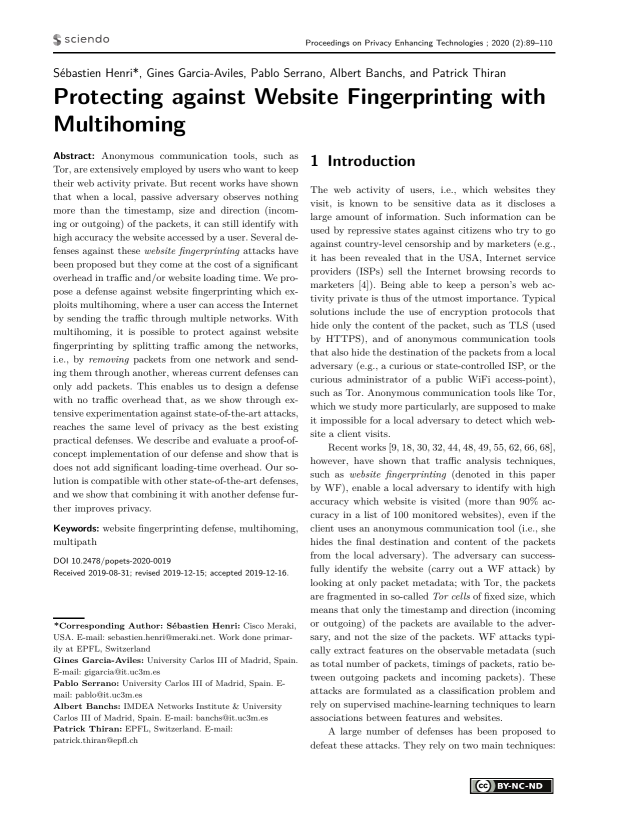Protecting against Website Fingerprinting with Multihoming
Authors: Sébastien Henri (Cisco Meraki, USA.), Gines Garcia-Aviles (University Carlos III of Madrid, Spain.), Pablo Serrano (University Carlos III of Madrid, Spain.), Albert Banchs (IMDEA Networks Institute & University Carlos III of Madrid, Spain.), Patrick Thiran (EPFL, Switzerland.)
Volume: 2020
Issue: 2
Pages: 89–110
DOI: https://doi.org/10.2478/popets-2020-0019
Abstract: Anonymous communication tools, such as Tor, are extensively employed by users who want to keep their web activity private. But recent works have shown that when a local, passive adversary observes nothing more than the timestamp, size and direction (incoming or outgoing) of the packets, it can still identify with high accuracy the website accessed by a user. Several defenses against these website fingerprinting attacks have been proposed but they come at the cost of a significant overhead in traffic and/or website loading time. We propose a defense against website fingerprinting which exploits multihoming, where a user can access the Internet by sending the traffic through multiple networks. With multihoming, it is possible to protect against website fingerprinting by splitting traffic among the networks, i.e., by removing packets from one network and sending them through another, whereas current defenses can only add packets. This enables us to design a defense with no traffic overhead that, as we show through extensive experimentation against state-of-the-art attacks, reaches the same level of privacy as the best existing practical defenses. We describe and evaluate a proof-ofconcept implementation of our defense and show that is does not add significant loading-time overhead. Our solution is compatible with other state-of-the-art defenses, and we show that combining it with another defense further improves privacy.
Keywords: website fingerprinting defense, multihoming, multipath
Copyright in PoPETs articles are held by their authors. This article is published under a Creative Commons Attribution-NonCommercial-NoDerivs 3.0 license.


